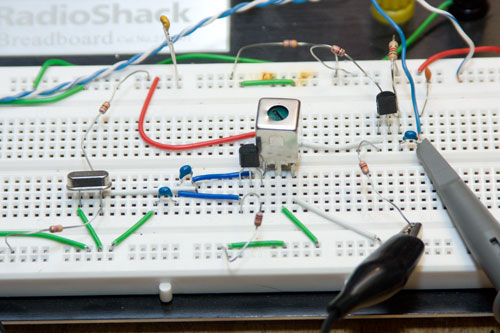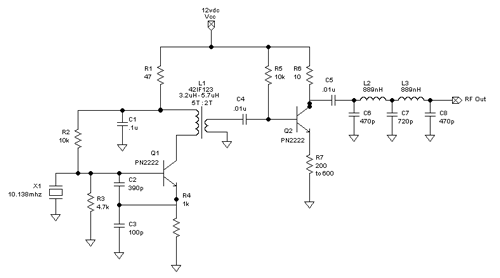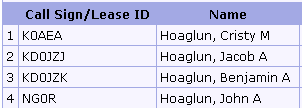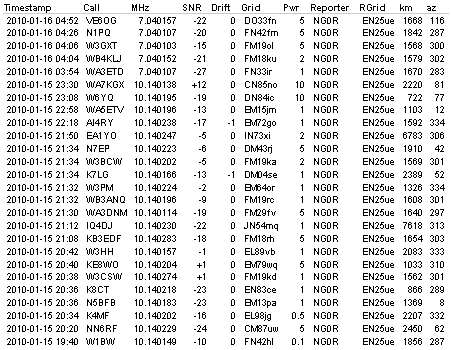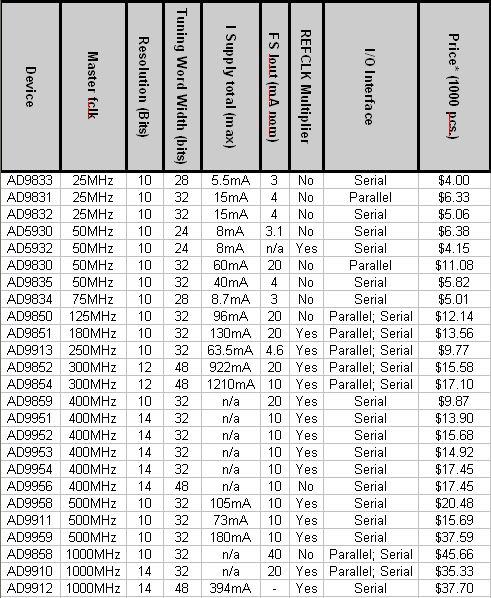This project is the follow-up to the
Pine
Board Directional Coupler that I built & tested a couple of weeks ago. That
project was largely based upon information from Sprat and Elecraft.
(Links to the
info is at the end of the post below.)I plan to use this with my Spectrum Analyzer as I need a safe way to sample levels
low enough for the scope. (I am not a fan of using attenuation pads if "real power"
might be involved as they could open up and present high power to the test tools if
they fail. Most pads are only rated at 2w.)
Goals:
Build a directional coupler with a port that is -20db from the reference signal. I
am primarily working at HF frequencies for my current design work but would like to
have basic VHF or even moderate UHF coverage if possible.
The ability to run real power through the unit if needed. (100w)
It should be easy to build.
It should allow for reproducible test results across other replicas of the unit.
The wire lead lengths were minimized where possible. Most of the part could easily
be scrounged from a junk box if you are a well equipped hobbiest... or my case some
of the parts from the internet. (Digikey, eBay, and kitsandparts.com)
 Schematic and parts:
Schematic and parts:
2 - T50-43 toroid (kitsandparts.com)
3 - BNC connectors (eBay from China)
2 - 100 ohm 1w resistors (non inductive from Digikey)
1 - standoff (Digikey)
1 - Hammond 1590B case (Digikey)
Misc Wire (12 gauge and 20 gauge from the junk box)
If you follow the schematic as guide a to the physical wiring of this project you
should be fine.
(Think of it as plumbing.)I am going to leave the theory explanation to others because I do not completely
understand the exact science that is going in that little box well enough to
be able to explain it to others. Check the links at the end of this post and I will
give you some good sites to visit for more information. Measurement:I went to
N0FP's QTH to do the measurements.
We did a baseline calibration to normalize things like the cables, signal generator,
and the RF power meter. We used a
Boonton
4220 RF power meter for this round of data capture. I plotted everything manually
into OpenOffice on my laptop and then brought the data home where I could work with
it in more detail.
(I have the data from 1mhz to 1100mhz)
The new coupler is at ~ -20db from 1mhz to 120MHz.
--It is flat within .5db from 1mhz to 125mhz.
--It is within 2db +/- out to near 400mhz.
What does the data mean:Looking at the graph shows that it is a good HF and VHF coupler but then loosens up
at UHF. I wanted to try to understand why it is moving around at UHF. The final project
has shorter wire lengths than the original Pine Board version but the trends were
similar.
(I plotted {in yellow} a low power coupler from MiniCircuits as part of
the test. It was something that N0FP had on hand while we were testing so it was an
interesting comparison.)After looking at the data I decided to plot the wire length to see if maybe we seeing
goofy response because of a 1/4 or 1/2 wavelength of wire. The table below plots the
number of turns, DB of coupling, wire length, frequency.

Sure enough it appears that the wire length is correlating to the data that I had
plotted from the couple of test runs. I think that it is possible to make this stable
at higher frequencies by moving from a -20db design to a -30db design. The challenge
is that the power levels at -30db might become low enough for small signal work that
the signal simply disappears in some cases.
Summary:
I have a nice directional coupler that is very accurate for HF and VHF testing. (It
is usable at VHF with the reference table.)
I have not (yet) tested it with 100w in but I would have no concerns with it
at that power level. (Most of my testing will not be higher than 5-10w.... probably
even lower than that.)
It is a pretty simple project that can be assembled in less than two hours.
The accuracy is reproducible as long as excess wire lengths are kept under control.
The parts are all readily accessible.
Links:GQRP/SPRAT article by
David
Stockton - G4ZNQhttp://michaelgellis.tripod.com/direct.htmlCalculator http://www.elecraft.com/manual/CP1%20Manual%20Rev%20A.pdfhttp://mjrainey.googlepages.com/qrppinlinedirectionalwattmeterhttp://www.microwaves101.com/encyclopedia/directionalcouplers.cfmhttp://www.e-meca.com/tech_papers/directional-coupler-specs.php





